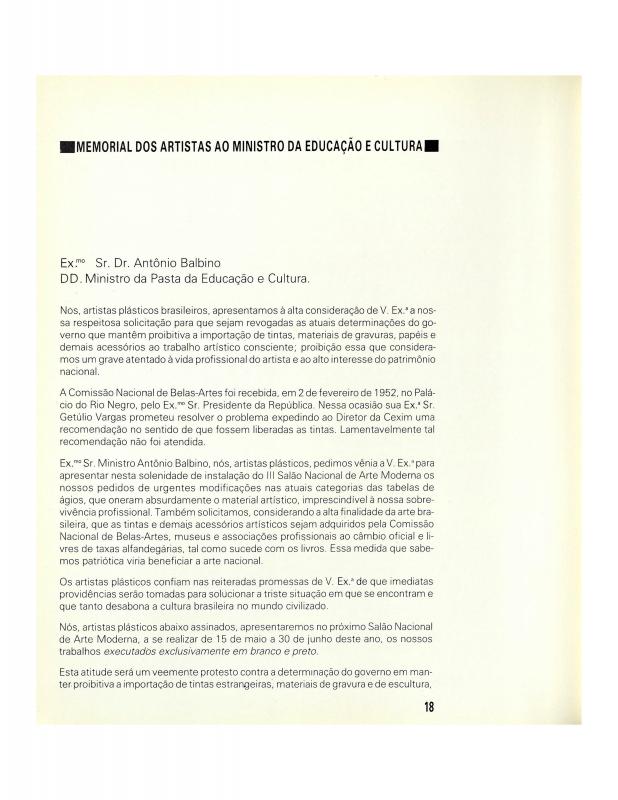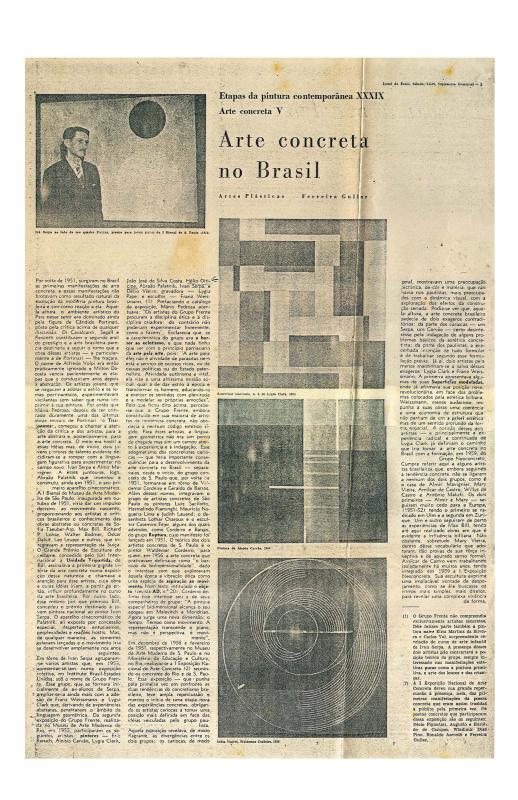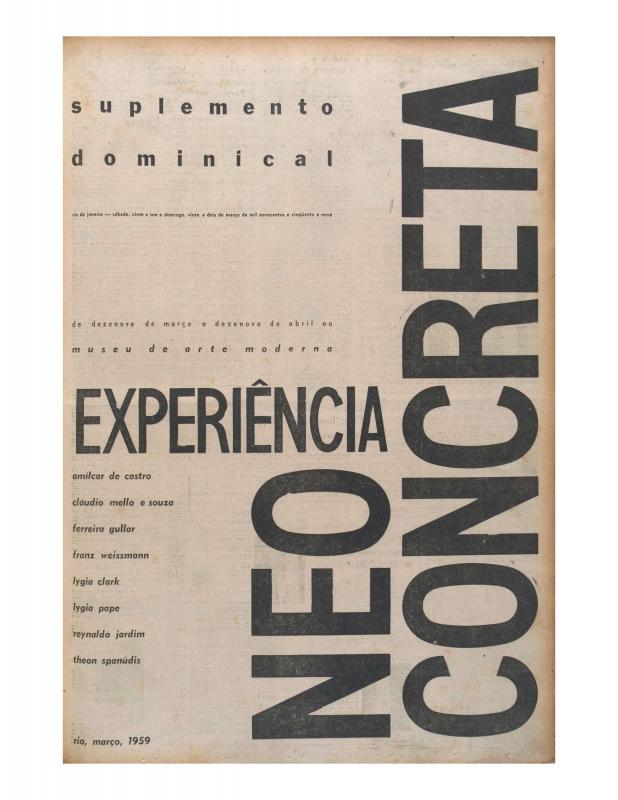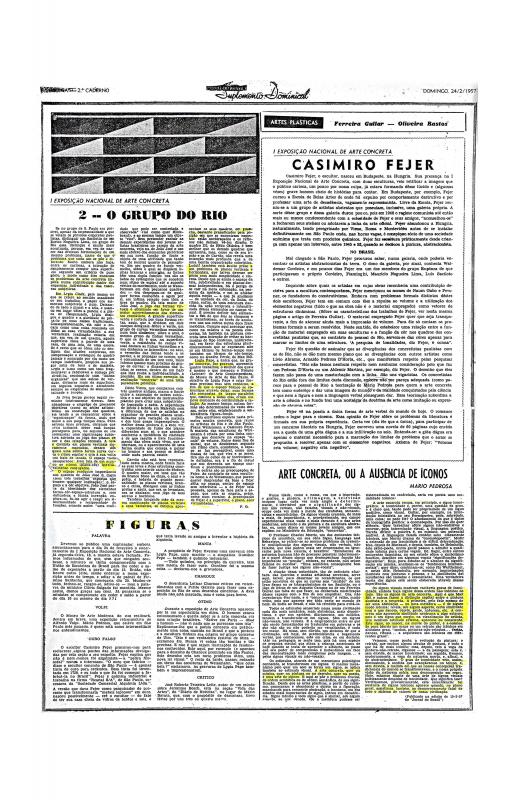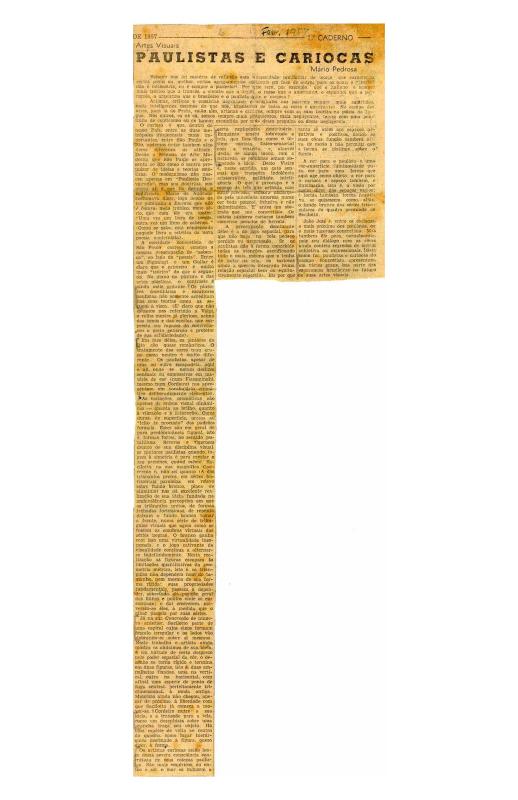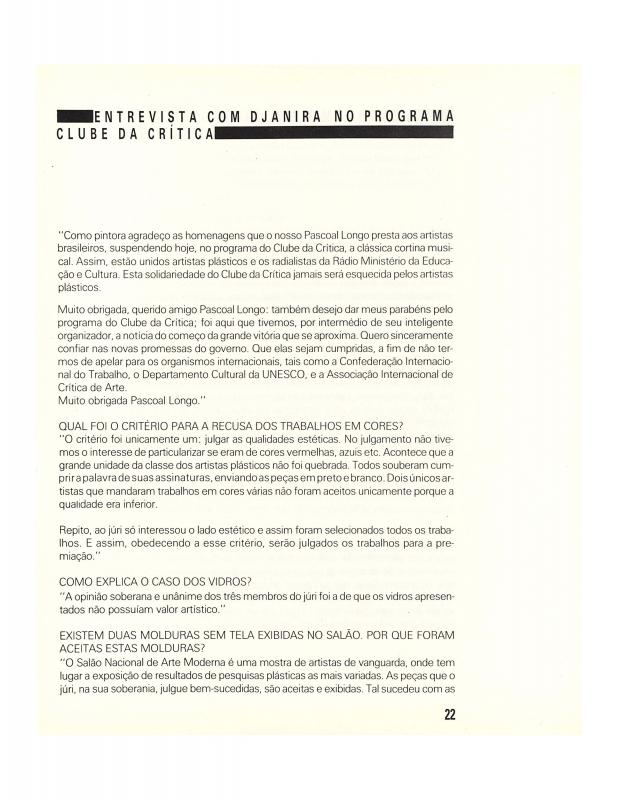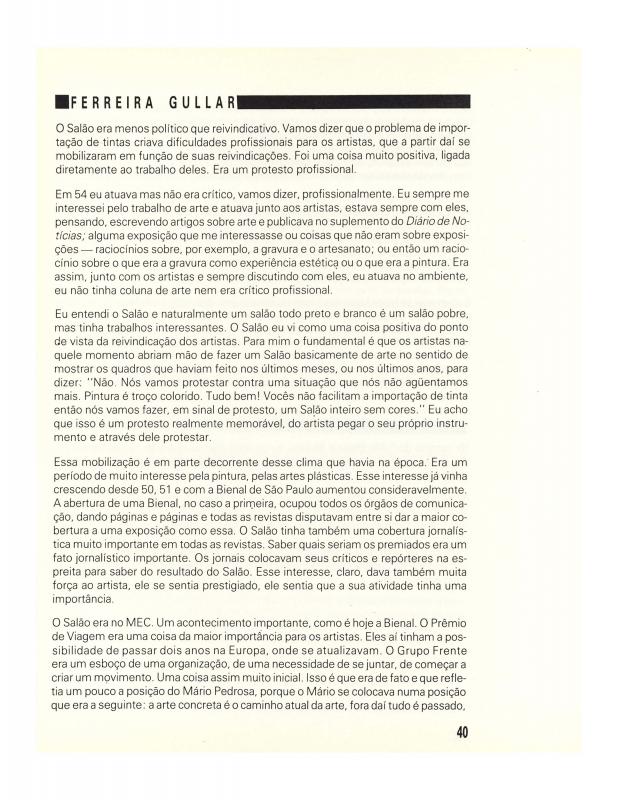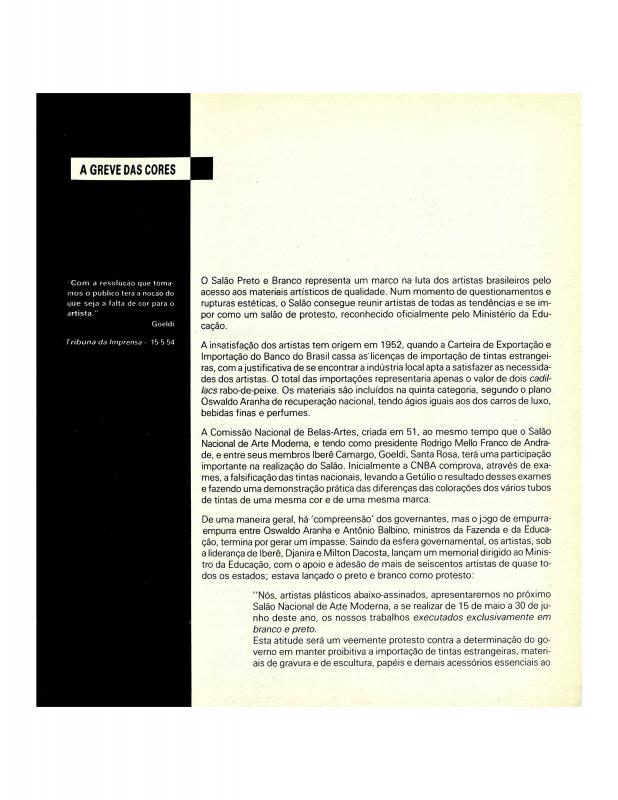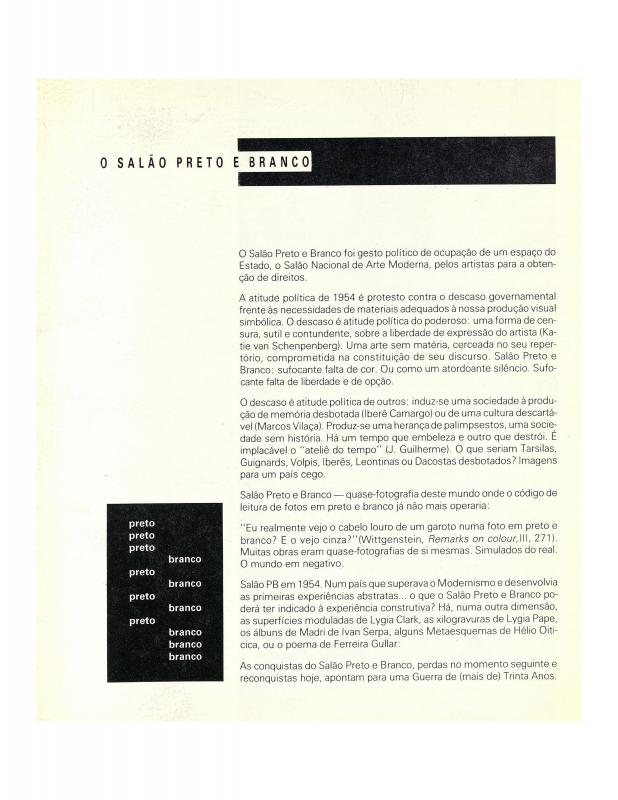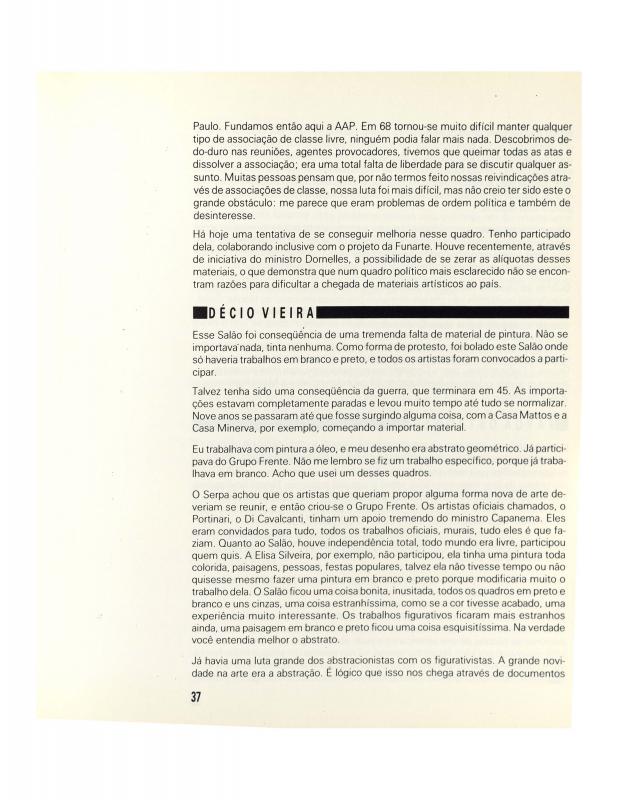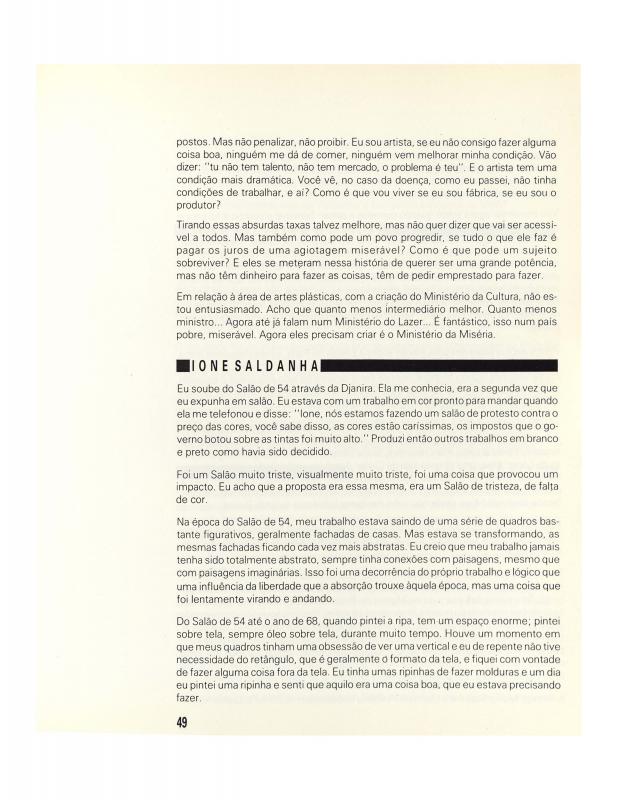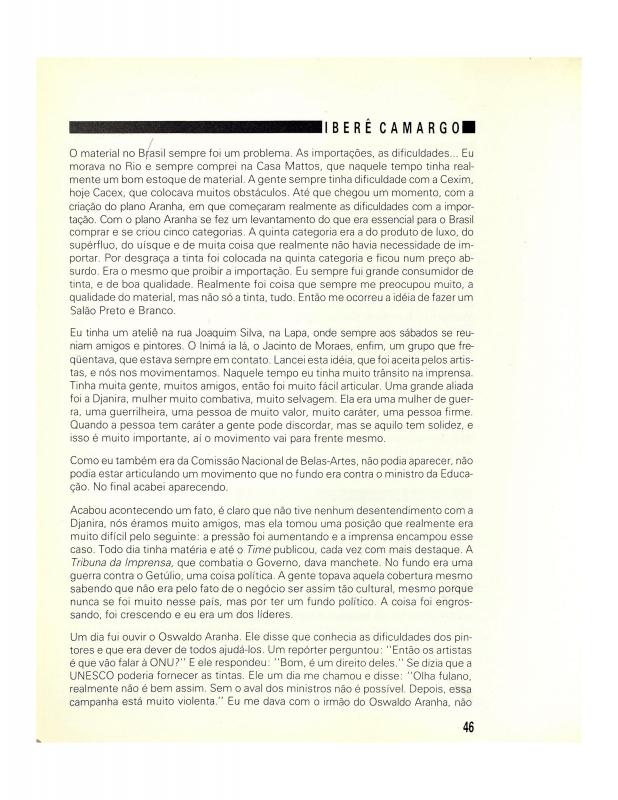The Salão Nacional de Arte Moderna was presented for the first time in 1952 in the wake of the División Moderna (Modern Division) at the Salão Nacional de Belas Artes. The third edition, which came to be known as the Salão Preto e Branco (Black-and-White Salon), opened on May 15, 1954. Participating artists protested against the poor quality of available art materials (mainly substitutes for imported products) due to import restrictions imposed by the Brazilian government. Led by Iberê Camargo, Milton Dacosta, and Djanira, six hundred artists from all over the country signed a manifesto addressed to the Ministério da Educação e Saúde (MES), the Ministry of Education and Health in the Getúlio Vargas administration, objecting to any restrictions on the import of paint, items used for printmaking and sculpture, paper, and other basic materials [see, in the ICAA digital archive: doc. no. 1307648">1307648]. As he recalls the event, Décio Vieira describes Ivan Serpa’s role in founding the Grupo Frente and his encouragement to explore abstract painting. The group fell apart as critics and artists left the country after the CIA-backed military coup in 1964. Vieira discusses the links between Brazilian Concrete art and North American abstract painting; he also mentions the critic Ferreira Gullar’s role in the consolidation of the group’s theoretical approach [see doc. no. 1090830].
Décio Vieira (1922–1988) studied drawing and painting under Axl Leskoschek (1889–1975) at the Fundação Getúlio Vargas, Rio de Janeiro, in 1948. He took a few of Ivan Serpa’s classes at the Museu de Arte Moderna do Rio de Janeiro (MAM-RJ) and joined the Grupo Frente. He exhibited his work in the 1950s with the Grupo Frente, which was later known as the Grupo Neoconcreto after the publication of their manifiesto in 1959 [see doc. no. 1110328]. He took part in the first Exposição Nacional de Arte Abstrata (Petrópolis, 1953), and the original Exposição Nacional de Arte Concreta (São Paulo, 1956). There, Vieira worked with Alfredo Volpi on the fresco Dom Bosco, at the Palácio dos Arcos (Brasília, 1966), learning the tempera technique and concentrating on texture and color. In the 1970s he once again took up figurative painting (landscapes), and taught painting classes at the MAM-RJ during the time when Frederico Morais was the director. He worked with Serpa and his wife to create an art school for children in the Rocinha favela in Rio de Janeiro. He contributed to several exhibitions of Brazilian modernism, including Konkrete Kunst organized by Max Bill in Zurich (1960), Projeto Construtivo Brasileiro na Arte (1977), Bienal Brasil Século XX (1994), and Arte Construtiva no Brasil: A Coleção Adolpho Leirner at the Museu de Arte Moderna de São Paulo (MAM-SP) and the MAM-RJ (1999). Vieira had solo shows at the Galeria Thomas Cohn (1987) and at the MAM-RJ (2003) and had a retrospective at Mello Franco’s Galeria Rodrigo (FUNARTE, 1992). He was invited to show his work at several São Paulo biennials and Salones Especiales (seventh and ninth editions).
Vieira’s recollections (and those of other participating artists) appear in the book A Arte e seus materiais: Salão Preto e Branco, 3º Salão Nacional de Arte Moderna, 1954 (Art and its Materials: Black and White Salon, Third National Modern Art Salon, 1954), published on the occasion of the 1985 exhibition at the Galería Especial del Salão Nacional de Artes Plásticas. According to the book, the situation recalled the famous Black-and-White Salon in 1954 in which works by Camargo, Aluísio Carvão, Anna Letycia, Aldo Bonadei, Ivan Serpa, Lygia Clark, Maria Helena Andrés, Maria Leontina, Tarsila do Amaral, Ubi Bava, and many others were shown. The publication includes primary and secondary sources that refer to the 1954 exhibition, as well as interviews with contemporary artists and critics.
[For more information about the work of Décio Vieira and the Grupo Frente, see “Ia Exposição Nacional de Arte Concreta: 2 - O grupo do Rio” by Ferreira Gullar (doc. no. 1090217); “Paulistas e cariocas” (doc. no. 1085056) and “Grupo Frente” (doc. no. 1083731) by Mário Pedrosa.]
[For complementary reading on the subject of the Salão Preto e Branco (Black-and-White Salon), see: “Memorial dos artistas ao Ministro da Educação e Cultura” (doc. no. 1307648">1307648); “Mensagem do Ministro da Educação e Cultura ao artistas” (doc. no. 1307663); “Entrevista com Djanira no programa clube da crítica” by Pascoal Longo (doc. no. 1307678); “Depoimentos: Ferreira Gullar” (doc. no. 1307732) and “Depoimentos: Aluísio Carvão” (doc. no. 1307694) by Glória Ferreira and Luiza Interlenghi; “A greve das cores” by Glória Ferreira (doc. no. 1307631); “O Salão Preto e Branco” by Paulo Herkenhoff (doc. no. 1307599); the five following testimonials conducted by Luiza Interlenghi: “Depoimentos: Décio Vieira” (doc. no. 1307712); “Depoimentos: Ione Saldanha” (doc. no. 1307774); “Depoimentos: José Silveira D'Ávila” (doc. no. 1307791); “Depoimentos: Sérgio Camargo” (doc. no. 1307831); “Depoimentos: Ubi Bava” (doc. no. 1307851); and “Depoimentos: Iberê Camargo” (doc. no. 1307754) by Evelyn Yoschpe.]

